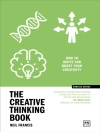How does economic growth work? Beginning with the history of leading countries over the past 2000 years, Economic Growth finds which countries have achieved sustained growth and how they did it. The effects of growth are examined on a human scale. The benefits of growth are enormous in terms of life, health, education, leisure and opportunity, while the downsides can be managed by appropriate policies.
Economic Growth develops a new theory of growth. This new theory is based on careful analysis of actual growth; it covers the causes and mechanisms as well as the results of growth. This new theory extends conventional theory by operating at the industry level and by placing demand considerations at the forefront of growth. Demand growth – based on product innovation, marketing, credit and the consumer society – drives the economy forward while supply growth – based on investment and process innovation – sustains the growth in spending and incomes. Growth is not automatic but, in the right conditions, demand and supply expansion work together to generate sustained growth.
Economic Growth offers a new view of growth, unique in its combination of historical depth, intellectual clarity and practical relevance. Its original insights will interest academic and professional economists, while its comprehensive treatment and lucid explanations make it an excellent guidebook for anyone interested in economic growth.
Зміст
Preface
1. Introduction
If there had not been growth; What is Economic Growth?; Measuring growth; A history of income; A broad history of economic growth; The growth leaders; Growth rates; The conventional theory of growth; Our objective
2. The world before economic growth
The Roman Empire; The Renaissance; The Spanish Empire; The Netherlands; Imperial China; Other countries; Why no growth?
3. The start of growth – Britain
A succession of changes; British agriculture; The cotton industry; The woolen industry; The steam engine; Coal; Iron and steel; Railways; Shipping; Economic growth in Britain
4. The leader – United States
The new leader; Agriculture; Electricity; Telecommunications; Motor vehicles; Aircraft; Transportation; Consumer appliances; Steel; Petroleum; Chemicals; Retailing; Advertising; Marketing; Entertainment; Finance; Information technology; Health care; Economic growth in the United States
5. Other countries, other systems
Maintaining growth; Coat-tail growth; Communism; Empire; Japan; Republic of Korea; China; Catch-up growth
6. Effects of economic growth
Population; Higher incomes; Education; Time; Mobility; Urbanization; Natural Resources; Local environmental effects; Broad environmental effects; Well being
7. Past theories of economic growth
Adam Smith; David Ricardo; Karl Marx; John Maynard Keynes; Milton Friedman; Wassily Leontief; Simon Kuznets; Walt Rostow; Modern growth theory; Growth accounting; Economic theory in the world
8. The mechanics of growth
Breaking through constraints; Industry growth; Different types of industry growth; The growth path for leading industries; The logistic model; Creating industry growth; The consumer society; Example – automobiles; Sequence of leaders; Sustaining industry growth; Capital; Process innovation; Productivity in industry growth; What drives innovation; Some innovation leaders; Innovation Hall of Fame; Demand and supply; Creative destruction?; The mechanics of growth
9. Extending the theory of economic growth
Three types of growth; Overview of the theory; Pre-conditions for growth; Growth in potential output; Increasing productivity; Growth in total spending; Growth industries; Mainstream industries; Declining industries; The vital sequence; Micro foundations to growth; Resource mobility; Growth accounting; Changing structure; Incomes; The role of government; Stability; Relationship to existing theory
10. Conclusions
What, when, where, how and why; Freedom; A good thing; Can economic growth continue?; Risks to economic growth; Will economic growth continue?
Appendix 1 Units of Measurement
Appendix 2 The United Kingdom
Appendix 3 Sources of data
References
Index
Про автора
Edward A. Hudson (Ph D, Harvard), working with Harvard’s Dale Jorgenson, pioneered computable general equilibrium models in the 1970s. He applied these models to understanding the ‘energy crisis’ and to analyzing energy policies. Dr Hudson then moved to strategy consulting, advising corporations and governments in the United States and New Zealand. This included advising on the great deregulation carried out in New Zealand in the 1980s and 90s. He has now returned to researching and writing on economic growth.












